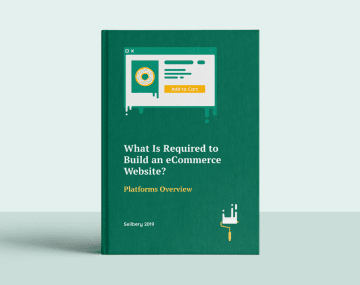
Discover the ins and outs of Pay Per Sale (PPS) marketing and how to overcome common challenges. Learn how to recruit high-quality affiliates, optimize conversion funnels, and drive sustainable growth in sales and revenue.
Pay Per Sale (PPS) marketing is a performance-based advertising model that has gained significant traction in the digital marketing landscape. In this blog post, we’ll delve into the intricacies of PPS marketing, exploring how it works, its key components, benefits, and strategies for success. By the end of this comprehensive guide, you’ll have a solid understanding of PPS marketing and how to leverage it effectively to drive sales and revenue for your business.
Understanding Pay Per Sale Marketing
PPS marketing operates on a simple premise: advertisers (merchants) pay affiliates a commission for each sale generated through their promotional efforts. Unlike traditional advertising models where advertisers pay for clicks or impressions, PPS marketing ensures that merchants only pay when a sale is made, making it a cost-effective and performance-driven approach. The key components of PPS marketing include merchants who offer products or services, affiliates who promote these offerings through various channels, and consumers who make purchases.
Setting Up Pay Per Sale Marketing Campaigns
Setting up Pay Per Sale (PPS) marketing campaigns requires a meticulous approach to ensure optimal results. The key to businesses successfully implementing pay per sale marketing campaigns involves carefully planning and executing their strategies. First and foremost, businesses need to select the right affiliate network that aligns with their target audience and objectives. Researching and vetting potential networks based on factors such as reputation, reach, and commission structure is essential for success. Once an affiliate network is chosen, businesses must identify products or services to promote through the PPS model. This involves assessing the profitability and relevance of offerings, considering factors such as consumer demand, competition, and profit margins. By carefully selecting the right products or services, businesses can maximize their earning potential and attract high-quality affiliates to their campaigns.
After selecting products or services, businesses must focus on creating compelling content and creatives to effectively promote their offerings to potential customers. This involves developing engaging ad copy, graphics, and multimedia assets that resonate with the target audience and drive action. Additionally, implementing robust tracking mechanisms is crucial for monitoring campaign performance and ensuring accurate commission payouts. By leveraging tracking tools and analytics platforms, businesses can gain valuable insights into key metrics such as clicks, conversions, and sales, allowing them to optimize their campaigns for maximum effectiveness. With a strategic approach to setting up PPS marketing campaigns, businesses can position themselves for success and drive measurable results in the competitive digital landscape.
Strategies for Success in Pay Per Sale Marketing
To succeed in Pay Per Sale (PPS) marketing, businesses must deploy strategic tactics that drive conversions and maximize revenue. Firstly, cultivating strong relationships with affiliates is paramount. By nurturing partnerships with reputable affiliates who have a relevant audience and a track record of driving sales, businesses can expand their reach and increase their chances of success. Providing affiliates with comprehensive support, including promotional materials, timely payouts, and ongoing communication, fosters trust and incentivizes them to prioritize the promotion of the business’s products or services. Moreover, offering competitive commission rates and performance-based incentives motivates affiliates to actively promote the offerings, resulting in higher conversion rates and increased revenue for both parties.
Additionally, optimizing conversion funnels and user experiences is critical for driving sales and maximizing ROI in PPS marketing. Businesses should focus on streamlining the path to purchase, removing friction points, and delivering seamless, personalized experiences that encourage conversions. This involves optimizing landing pages, checkout processes, and call-to-action buttons to facilitate easy navigation and prompt users to take desired actions. Moreover, implementing conversion rate optimization (CRO) techniques such as A/B testing, heatmapping, and user feedback analysis enables businesses to identify and address areas for improvement, ultimately enhancing the overall conversion rate and profitability of PPS campaigns. By prioritizing affiliate relationships and optimizing conversion funnels, businesses can position themselves for long-term success in PPS marketing and drive sustainable growth in sales and revenue.
Common Challenges and How to Overcome Them
Despite its potential benefits, Pay Per Sale (PPS) marketing comes with its fair share of challenges that businesses must navigate to achieve success. One common challenge is finding and recruiting high-quality affiliates who are capable of driving meaningful sales. In a crowded affiliate marketing landscape, businesses may struggle to identify affiliates with the right audience demographics, marketing expertise, and ethical standards. To overcome this challenge, businesses should invest time and resources into thoroughly vetting potential affiliates, leveraging affiliate networks, and building relationships with industry influencers who have established credibility and a loyal following. Additionally, offering competitive commission rates, incentives, and exclusive promotional opportunities can help attract top-tier affiliates and incentivize them to prioritize the promotion of the business’s products or services.
Another challenge in PPS marketing is effectively managing and optimizing campaigns to drive maximum ROI while mitigating the risk of fraudulent activity and affiliate abuse. Businesses may encounter issues such as click fraud, cookie stuffing, and unauthorized discount code usage, which can undermine the integrity of their campaigns and erode profitability. To address these challenges, businesses should implement robust tracking and monitoring systems to detect and prevent fraudulent activities in real-time. Utilizing advanced analytics tools, fraud detection software, and affiliate compliance guidelines can help businesses identify suspicious behavior, enforce compliance standards, and protect their bottom line. Moreover, fostering transparent communication and accountability with affiliates, setting clear expectations, and providing regular performance feedback can help foster a trustworthy affiliate ecosystem and minimize the risk of fraudulent activity in PPS marketing campaigns.
Future Trends in Pay Per Sale Marketing
As technology continues to evolve and consumer behavior evolves with it, the landscape of PPS marketing is expected to undergo further transformations. Emerging technologies such as artificial intelligence and machine learning are poised to revolutionize how businesses engage with consumers and optimize their marketing efforts. Additionally, shifts in consumer preferences towards experiential and value-driven shopping experiences will shape the future of PPS marketing. Businesses that stay abreast of these trends and adapt their strategies accordingly will be well-positioned to thrive in the ever-changing digital marketplace.

Pay Per Sale marketing offers a powerful and cost-effective way for businesses to drive sales and revenue while minimizing risk. By understanding the intricacies of PPS marketing and implementing effective strategies, businesses can harness the full potential of this performance-driven advertising model. With careful planning, diligent execution, and a focus on building strong relationships with affiliates and consumers, businesses can leverage PPS marketing to achieve their sales and growth objectives in today’s competitive marketplace.
Was this news helpful?







 Yes, great stuff!
Yes, great stuff! I’m not sure
I’m not sure No, doesn’t relate
No, doesn’t relate



